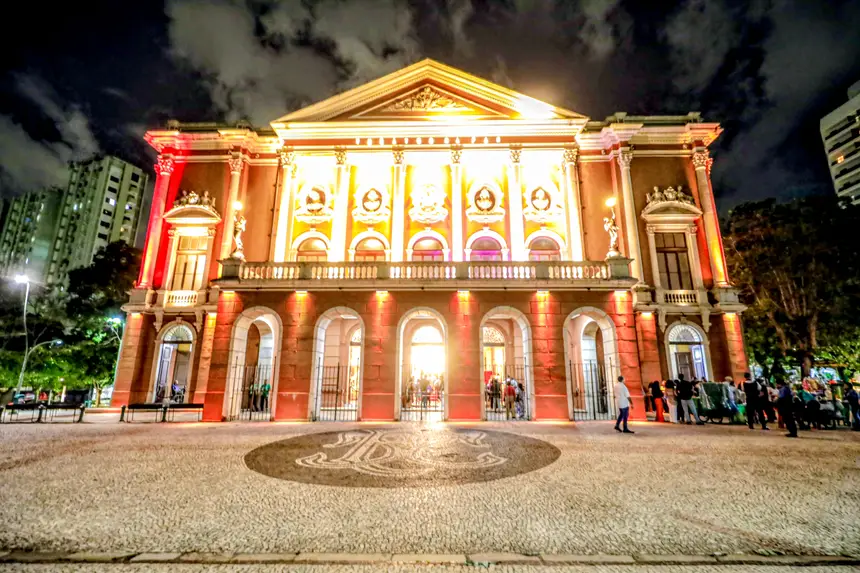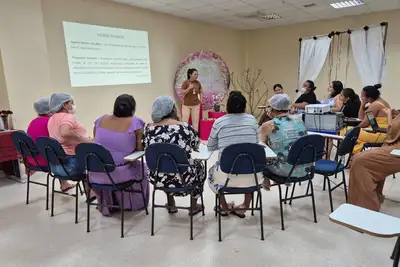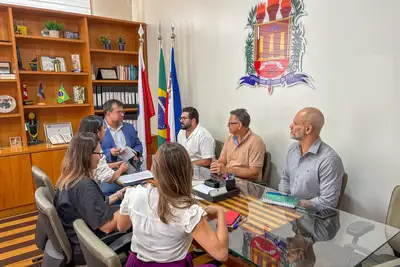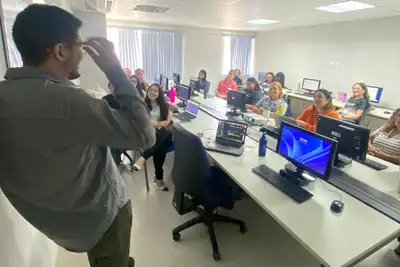Theatro da Paz is evaluated by UNESCO as a candidate for World Cultural Heritage
The evaluation is the responsibility of the International Council on Monuments and Sites (Icomos), associated with the United Nations Educational, Scientific and Cultural Organization (UNESCO)
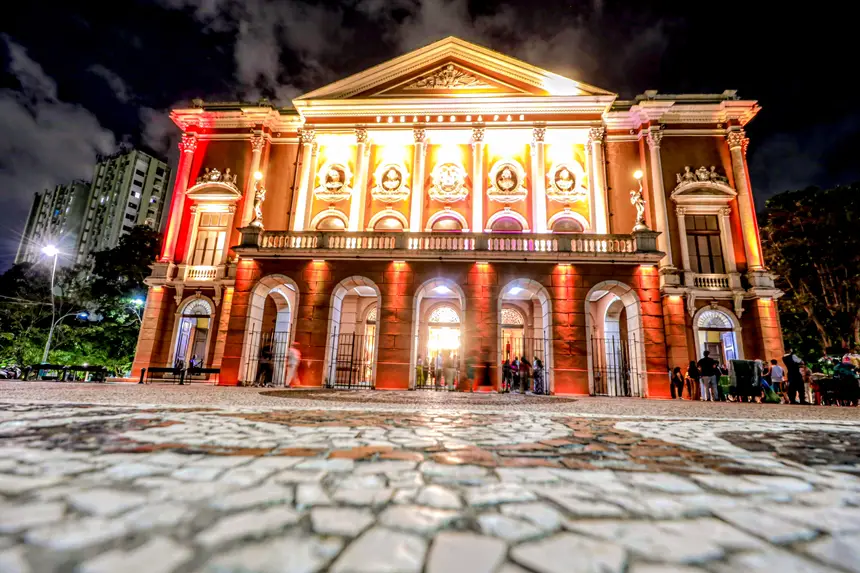
The Theatro da Paz, in Belém, received between September 11 and 14 the visit of the representative of the International Council on Monuments and Sites (Icomos), an entity associated with the United Nations Educational, Scientific and Cultural Organization (UNESCO). The mission is part of the evaluation stage of the "Theaters of the Amazon" — Theatro da Paz (PA) and Teatro Amazonas (AM) — for the UNESCO World Cultural Heritage List.
In total, the mission of the Icomos representative in Brazil lasted eight days. Before Belém, from September 7 to 10, the representative visited Manaus to see the Teatro Amazonas. The mission was organized by the National Institute of Historic and Artistic Heritage (Iphan), in coordination with the governments of Amazonas and Pará, as well as the city halls of both capitals.
In Belém, the State Secretary of Culture, Ursula Vidal, participated in the opening and accompanied the work. "It was an opportunity to demonstrate how the Government of Pará has a permanent commitment to the maintenance of our heritage and also to ensuring our population's access to this performance house, which is the most symbolic of our historical heritage," the secretary evaluates.
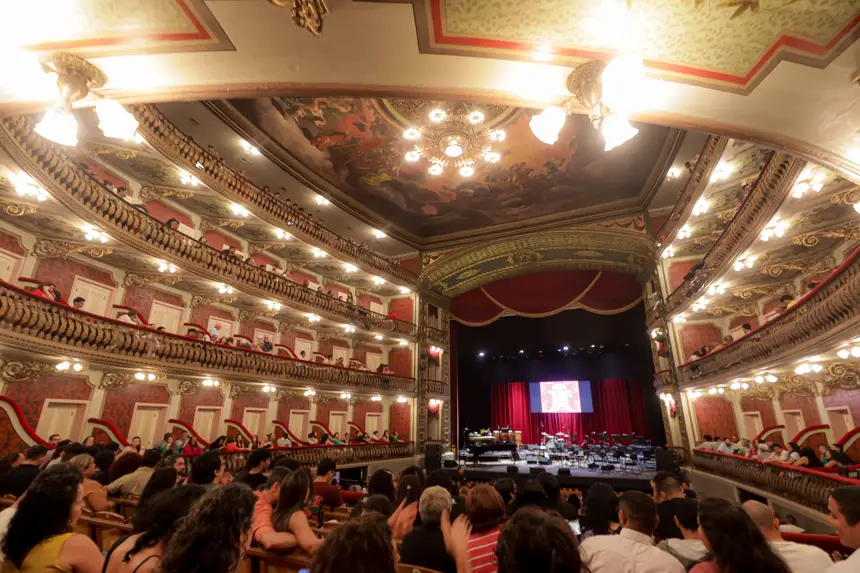
Ursula added that the visit also allowed for the presentation of the work developed by the artistic bodies of Theatro da Paz, the Amazônia Jazz Band and the Symphony Orchestra. "We bring into public performances that, naturally, would not have access, ensuring a permanent program of access and inclusion. It is a reaffirmed commitment of the State Government to the maintenance and appreciation of our heritage," she states.
Belém - In the capital of Pará, the international mission dedicated four days of activities to Theatro da Paz and its immediate surroundings, formed by Praça da República, Parque João Coelho, and Praça da Sereia — an area defined in the candidacy dossier as the core zone. Nearby streets and sites that are part of the so-called buffer zone were also observed, both delineated in the dossier submitted to UNESCO on January 31, 2025.
Architectural and artistic elements, documents, and collections were analyzed, in addition to meetings held with technical teams, artists, producers, educators, tourism agents, and representatives of civil society. She also attended, on the 13th, the concert "Symphonic Jazz," in which the Amazônia Jazz Band and the Symphony Orchestra of Theatro da Paz performed together on the stage of Theatro da Paz.
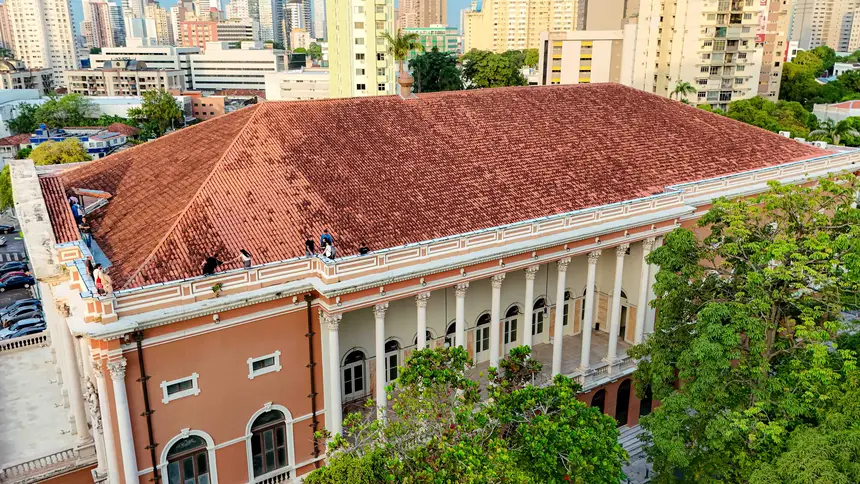
The Icomos representative also visited Combu Island and walked along the city's waterfront to closely observe the historical and daily relationship of Belém with its rivers — a structuring element of the landscape, culture, and urban formation of the capital of Pará.
Manaus - In the capital of Amazonas, the Icomos team focused on Teatro Amazonas and its surroundings, especially Largo de São Sebastião, defined in the dossier as the core zone, and streets and sites in the historic center included in the buffer zone. Over four days, conservation elements, documentation, and the role of the theater in the cultural life of the city were evaluated.
Transformation - Conceived as elite leisure spaces in the 19th century, the Theaters of the Amazon remain central to the cultural life of Belém and Manaus because they have been redefined over time. Today, they host both classical performances and contemporary expressions of Amazonian and Brazilian popular cultures.
For the director of the Department of Material Heritage and Inspection of Iphan, Andrey Schlee, this dynamism is decisive in the evaluation of the candidacy. "To be recognized as World Heritage, a property must be updated, kept alive. And the Theaters of the Amazon are. Cultural facilities like these drive the creative economy of both cities," he stated.
Schlee emphasizes that the architectural value of the two buildings is just one of the attributes under analysis. "If during the colonial period, Brazilian cities were marked by a nucleus composed of a church and fortification, from the second half of the 19th century, theaters like those in the Amazon, with their wide squares, began to occupy a new central place in the city," he explained.
He also highlighted that the theaters symbolize the arrival of a new social class enriched by the rubber cycle. "The Theaters of the Amazon symbolize the arrival of a new bourgeois social class, enriched by the economic peak derived from rubber extraction, with new values. It was a class influenced by the European countries with which they began to engage intensely, especially through the waters of their rivers," Schlee added.
In this two-way dialogue, Schlee states, the theaters blend aesthetics and materials imported from Europe with local raw materials and references — such as the use of native woods, floors with tiles glued with gurijuba glue (a regional fish whose swim bladder is used to extract the substance), paintings that refer to the Amazonian fauna and flora, and busts that honor Brazilian romanticism figures like José de Alencar, Gonçalves Dias, and Carlos Gomes.
The technical coordinator of Iphan in Amazonas, Rafael Azevedo, reinforced the preservation of these characteristics. "Even the adaptations made over the decades to ensure safer and broader uses of the two theaters – such as fire-fighting systems, audio description equipment, ramps, and elevators, for example – do not alter their original attributes," he stated.
Representativity - For the head of the International Affairs Advisory of Iphan, Juliana Bezerra, the candidacy enhances the cultural representativity of the Northern Region on the global stage.
"UNESCO already recognizes the complex of protected areas of Central Amazon – Jaú National Park, Mamirauá Sustainable Development Reserve, Amanã Sustainable Development Reserve, and Anavilhanas National Park – as Natural World Heritage. And under the Convention for the Safeguarding of the Intangible Cultural Heritage of Humanity, there is already the Círio de Nazaré. Now, the current candidacy of the Theaters of the Amazon sheds light on a project of urban formation and new centralities in the cities through culture, as well as disseminating and promoting the work of cultural workers from these two important capitals of the North," she stated.
The official recommendation on the candidacy is expected to be presented to UNESCO in March 2026, and the final evaluation is scheduled for July of the same year, during the 48th session of the World Heritage Committee, with Brazil represented by Iphan, the Ministry of Culture, and the Ministry of Foreign Affairs.
*With information from the Communication Advisory of Iphan


